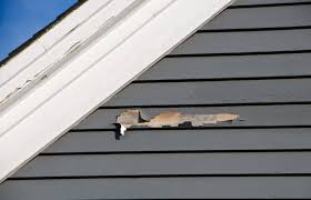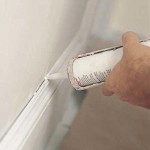Why is the paint peeling on my house?
The basic cause for peeling paint is poor adhesion.
Fortunately there is a good solution for correcting this problem.
Peeling paint can appear as lifting, bubbling, cracking, splitting, wrinkling, and even peeling between coatings.
The lack of adhesion can be caused by:
1. Not using a primer. Primer has a specific purpose and is formulated differently than a topcoat or finish coat. Primer is designed to soak deep in to the substrate and provide a tooth or slight coarseness for the finish coat to adhere to. The primer seals the surface and helps prevent moisture from soaking into the wood.
2. The use of a low quality primer. Low quality primer may not seal the wood thoroughly or give the adhesion necessary.
3. Painting over bare wood with a finish coat. The bare wood will draw pigments from the paint causing the topcoat, when it dries, to offer less protection.
4. Applying a finish coat that is too thick. This limits the ability of the paint to stretch and be elastic in different weather conditions and results in splitting.
5. Applying the paint too thin. This is a common mistake of most do-it-yourselfers. The finish coat lacks proper thickness and therefore cannot endure weathering.
6. Painting over a surface that is too glossy. The glossy surface is too slick for most top coats to adhere to. It must be sanded or de-glossed in order to allow adhesion.
7. The surface is dirty, chalky or mildewed. These conditions form a barrier that will prevent the paint from adhering to the surface.
8. Painting in direct sunlight. This causes the outer surface of the paint to dry too quickly and does not allow the inner surface of the paint to cure property. Bubbling usually occurs when this happens.
9. Painting over a wet surface. This also can cause bubbling because the moisture is trapped under the dried coating. The sun tries to draw the moisture out, but it cannot escape causing the paint to bubble.
The basic solution to all of the above problems is fairly simple but requires a bit of work to be successful.
The solution is to scrape off all the loose paint. This can be accomplished with a putty knife, a sander, or a hook scraper. Sometimes the peeling area needs to be “chased”. Having removed the loose paint from an area, you will find that the edges of the paint that surrounds the bare area are still loose. “Chasing” is chipping away at these edges until you find sound paint. If this is not done, these edges will pull and curl up as the primer dries.
You may want to sand these edges to a medium or fine smoothness so that the repaired area does not have a distinct edge. If the peeling is extensive you may want to use an environmentally friendly paint remover.
Next make sure the surface is dry and clean. This means there is no moisture, dirt, chalkiness, or mildew.
You are now ready to apply a good quality primer. Allow this to dry thoroughly.
Once dried, apply a top-quality finish coat.
You have achieved success!






